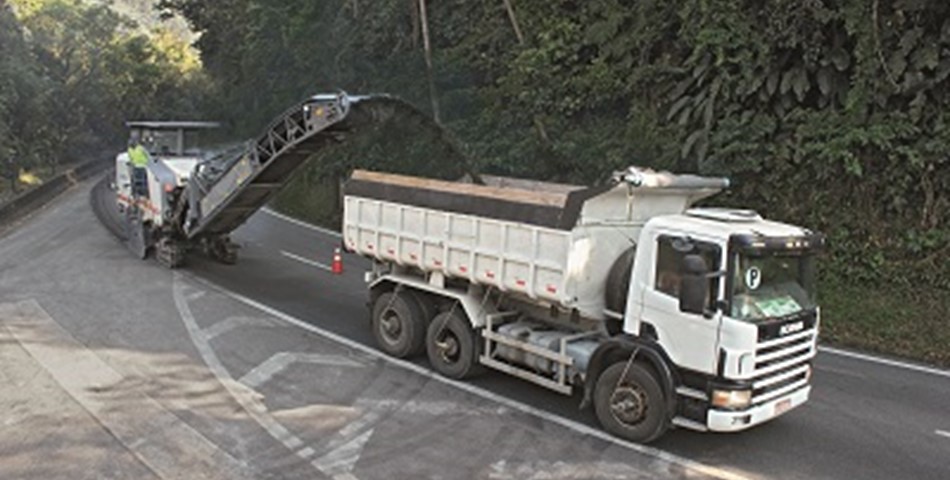The Anchieta-Imigrantes motorway system is the main link between the metropolitan region of São Paulo and the port of Santos, the largest port in Brazil and the busiest in Latin America. Construction of the Anchieta motorway began in 1947, with Imigrantes following at the start of the 1970s. Today the Anchieta handles mainly heavy goods traffic – 95 percent of its daily traffic consists of trucks – while cars predominantly use the Imigrantes. Now the two motorways are being rehabilitated over a total length of 300km. The removal of the surface and binder course was handled by a Wirtgen large milling machine of type W 200.
Precise and economic milling
The high proportion of heavy-goods vehicles and the significant traffic density place enormous strain on the asphalt surfaces, making regular maintenance vital. The contract for the current job was won by the Baixada Santista Consortium. The construction company CR Almeida, which is part of the consortium and responsible for the milling, worked alternately on both roads – northbound and southbound. While the W 200 milled the Anchieta motorway, which was closed completely, traffic was diverted to the Imigrantes motorway.
Milling rate up
For this mammoth project, CR Almeida is using the efficient W 200 large milling machine, which runs in continuous operation 24 hours a day during the rehabilitation work. This is where the powerhouse can really put its enormous capabilities to the test. That’s because the W 200, with its powerful engine delivering a maximum power of 410 kW, is specially configured for high area outputs – whether on large sites or in confined spaces. The manoeuvrability of the large milling machine particularly proves its worth in the very narrow defiles that snake their way through the Brazilian uplands 40 km south of São Paulo, so that the W 200 was able to mill both road surfaces over a width of 2 m and to a depth of 8 cm rapidly and precisely in one operation.
Operating costs down
Milling machine operator Janderson de Souza Mota emphasizes the ease of handling offered by the WIDRIVE machine control system, which links the most important machine functions together: “While the engine, for instance, sets the operating speed automatically when the milling process is started, it automatically returns to its idling speed when milling is finished. This allows us to reduce not only fuel consumption but also noise emissions.” What is more, the water required for cooling the cutting tools is regulated as a function of the engine load and milling speed. The load-dependent sprinkler unit allows a water saving of up to 20 percent. “For us that means we need to fill up less water, but the service life of the cutting tools is still longer,” says the site Manager Cleiton Farias de Jesus, delighted with the much lower downtimes.
Transport made easy
With the milling work on the Anchieta motorway having been completed faster than anticipated that day, the W 200 even made up time before it was to begin its scheduled night-time job on the Imigrantes motorway. So, without hesitation, Cleiton Farias de Jesus and his team stopped at Cubatao, just a few kilometres away, in order to mill a strip a few hundred metres long over a working width of 2m, but this time to a depth of 28 cm.














